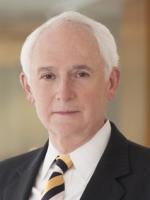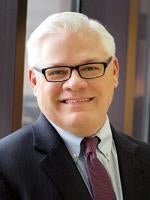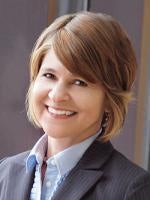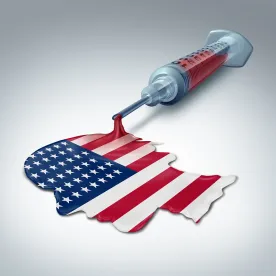On June 21, 2018, the US Department of Labor (DOL or the Department) published its final rule, amending the definition of “employer” under section 3(5) of the Employee Retirement Income Security Act (ERISA) to allow for the establishment of group or association health plans (AHPs) (Final Rule). Similar to a corresponding proposed rule issued earlier this year (the Proposed Rule,), the Final Rule broadens the criteria under ERISA for determining when and how employers may form associations to offer group health plans to multiple employers and self-employed individuals.
According to the DOL, the Final Rule is intended to expand access to group health coverage by permitting businesses, sole proprietors and self-employed to form associations to sponsor AHPs based on common geography, industry or trade, if certain criteria are met.
Bona Fide Group or Association
Formerly, under prior interpretations, the DOL limited single “multiple employer” plans to employer groups or associations where a close “nexus” of the employers participating in the plan existed. Further, employer groups were prohibited from forming associations for the sole purpose of providing group health coverage. The Final Rule relaxes these requirements.
Under both the Proposed and Final Rule, an association may now establish a group health plan if certain requirements are met regarding the purpose and control of the association, the make-up of the employer members, the availability of group health coverage and compliance with nondiscrimination provisions. By meeting these requirements, an association can achieve “bona fide group or association” status and, thus, act as an employer for the purpose of offering a group health plan.
A Substantial Business Purpose Is Now Required
Related to the definition of “bona fide group or association,” which dictates the type of associations that may offer AHPs, the Final Rule adds a requirement that the “bona fide group or association” must have a “substantial business purpose” unrelated to offering a group health plan, even if its “primary purpose” is to offer group benefits.
While “substantial business purpose” is not defined in the Final Rule, a group or association is considered to have a “substantial business purpose” if it could exist as a viable entity absent offering a group health plan. The Final Rule provides examples of the types of business purposes that may qualify as being “substantial,” such as engaging in public relations activities or advancing the well-being of the members’ industry, which suggests that the standard is not very high.
Control Over the Group or Association and AHP Clarified
The Final Rule maintains a “control test” that requires member employers to maintain “control” over an association offering an AHP, which ensures the association acts “in the interest” of member employers as required under ERISA. However, the Final Rule adds to the “control test” the requirement that control “be present both in form and substance.” Notwithstanding, the DOL has commented that association members are not required to manage the daily affairs of the group or association in order to qualify as “bona fide,” and provides guidance about what constitutes sufficient control.
Definition of “Working Owners” Expanded
The Final Rule permits “dual treatment” of working owners as both “employer” and “employee,” allowing self-employed individuals to join an association to obtain AHP coverage. In comparison to the Proposed Rule, the Final Rule eliminates some eligibility criteria for “working owners” and clarifies others, expanding the type of self-employed individuals that may a obtain AHP coverage.
Working Owners Treated as Employers and Employees
The Final Rule adds that working owners “without common law employees” may qualify as both an employer and employee for the purpose of participating in an AHP, permitting greater access for self-employed individuals. In addition, the Final Rule reduces the hours-worked provision to an average of 20 hours per week or 80 hours per month, allowing AHPs to offer coverage to a broader range of self-employed individuals.
Notably, the Final Rule deletes the Proposed Rule’s provision that excluded an individual from “working owner” treatment if the individual was eligible to participate in any subsidized plan maintained by any other employer of the individual or his or her spouse. Consequently, even if other coverage is available, an individual may now take up AHP coverage.
Working Owner Requirements Must Be Verified
In the Proposed Rule, the association was permitted to “reasonably rely” on an individual’s written representation that he or she met the “working owner” requirements, absent any knowledge to the contrary. The Final Rule heightens the duty to verify eligibility by requiring the group plan fiduciary to determine that the conditions of “working owner” are satisfied and to continually monitor eligibility. The Final Rule does not set forth requirements for monitoring procedures.
Clarifications in the Final Rule
In addition to minor modifications in language for clarity or consistency, the Final Rule clarifies requirements regarding “former employee” eligibility; the prohibition against a health insurance issuer as a bona fide group or association; and the applicability of the nondiscrimination provisions. The Final Rule also clarifies that it does not invalidate any existing DOL advisory opinions (or preclude future advisory opinions) that address circumstances in which a person may be considered an “employer” for the purposes of sponsoring an AHP.
Applicability
This Final Rule is effective August 20, 2018, 60 days after publication in the Federal Register, but the applicability dates roll out over the next 10 months:
- September 1, 2018 for employee welfare benefit plans that are fully insured and meet the requirements for being an AHP sponsored by a bona fide group or association of employers
- January 1, 2019 for any employee welfare benefit plan that is not fully insured, is in existence on August 20, 2018, meets requirements that applied before August 20, 2018 and chooses to become an AHP
- April 1, 2019 to any employee welfare benefit plan established to be and operated as an AHP






 />i
/>i

